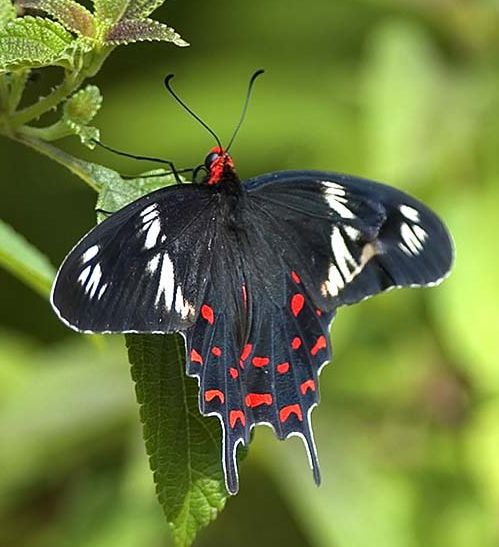Facts About Pachliopta hector
The Crimson Rose (Pachliopta hector) is an eye-catching swallowtail butterfly native to India, Sri Lanka, the Maldives, and potentially western Myanmar. It is frequently seen in the Western Ghats but remains quite rare in Gujarat. In India, this butterfly is a protected species, underscoring its ecological significance.
Male Crimson Roses display a black upper side adorned with white and crimson spots, while females exhibit a similar but slightly less vibrant pattern. These butterflies flourish in various habitats and show a particular affinity for flowers like Lantana, from which they gather nectar.
Their flight pattern is notable: they flutter slowly and close to the ground but can accelerate at higher elevations. One of their most remarkable features is their use of aposematism, meaning they sport bright colors to warn predators of their inedibility, a result of the toxins they accumulate from their diet.
Crimson Roses are also recognized for their migratory behavior, often seen traveling in large swarms during peak seasons. They breed up to seven times a year, with a swift lifecycle from egg to adult. Eggs hatch in about seven days, and the caterpillars, which interestingly exhibit cannibalistic tendencies, grow rapidly. Their pupae are easily identifiable by their pinkish-brown color and pronounced wing cases.
The larvae feed on various Aristolochia species, from which they derive chemical compounds that render them distasteful to predators. Throughout the year, the adult butterflies depend on nectar from a diverse array of plants.
The species name, Pachliopta hector, pays homage to the Greek hero Hector. With its intriguing behavior, diverse habitats, and unique characteristics, the Crimson Rose is a butterfly worthy of observation and study in its natural environment.

 India
India